In 2015 I was invited to speak during Bosnia Agile Day in Sarajevo. It was a wonderful experience and I got to test the vision I have on using ‘game thinking’ in a company-wide perspective. The model in my new book ‘Playing on the job’ (due in 2017) is called the Progress-Loop and will be explained in the presentation below. Enjoy and share it on Twitter #gamification. If you have any questions about it, send me a tweet @barthufen
Progress Loop presentation in Sarajevo
Gamification of Business
On October 17th 2015, I was invited to give a presentation about gamification of businesses and organizations. Particularly I disclosed the essence of my new book “Playing on the Job” (out in 2016 I hope) – my main model – the ‘Loop of Progress’. The idea of the ‘Loop of Progress’ is that you identify which concurrent processes lead to synergie in your organization and create multi-disciplinairy teams to take part in those processes, rather than letting departments do that. Inspired from FarmVille – I started rethinking business processes and business models, from understanding the gameloop and other game mechanics and applying them to your daily business. In this presentation I explain our GameStorm tool – that we use to develop our serious games and help to start making a change in organizations like the City of Amsterdam, Foot Locker Europe and Vodafone. And – of course – I elaborate on the ‘Loop of Progress’…
Twitch: gamers watching gamers playing games
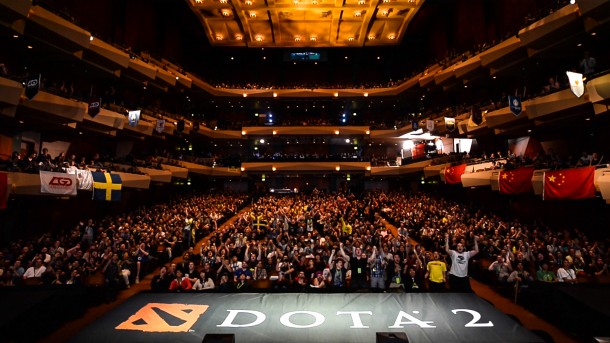 In the year 2000, being a product manager at Atari (formally know as Infogrames) I organized one of the first online game competitions in the Benelux with a real-life finale called ‘Gamer of the Year’. Thanks to the support of Clanbase we managed to start with an on-line competition amongst players of Unreal Tournament – one of the games in my portfolio. After the on-line pre-rounds, we held a grand finale in Antwerp, sponsored by Diesel and Red Bull, for the 64 best players in the Benelux. I never expected that e-sports would take off after that – and for a long time – it actually didn’t. Sure, there were a lot of tournaments going on on-line and offline (LAN-Parties) using games like Quake, Unreal Tournament, Counter Strike and later Call of Duty, but never on a global scale and with the financial support it deserved. Since 2013 however, this all changed. I guess it all accelerated thanks to Twitch.tv founded in 2011.
In the year 2000, being a product manager at Atari (formally know as Infogrames) I organized one of the first online game competitions in the Benelux with a real-life finale called ‘Gamer of the Year’. Thanks to the support of Clanbase we managed to start with an on-line competition amongst players of Unreal Tournament – one of the games in my portfolio. After the on-line pre-rounds, we held a grand finale in Antwerp, sponsored by Diesel and Red Bull, for the 64 best players in the Benelux. I never expected that e-sports would take off after that – and for a long time – it actually didn’t. Sure, there were a lot of tournaments going on on-line and offline (LAN-Parties) using games like Quake, Unreal Tournament, Counter Strike and later Call of Duty, but never on a global scale and with the financial support it deserved. Since 2013 however, this all changed. I guess it all accelerated thanks to Twitch.tv founded in 2011.
Twitch is an online streaming video service where gamers can watch gamers playing games. To be honest I never saw the fun in that, but nowadays it is so popular that Twitch is in the Top 10 websites responsible for the most data traffic in the world, alongside Amazon, Facebook and Google… The first company – Amazon – bought Twitch recently for a little under ONE BILLION DOLLARS ! Can you imagine that a video streaming service, launched four years ago has generated so much interest in four years time that it is worth that much money?! How much is one billion dollars spread over four years of days or hours…? Well… it’s $ 694.444,- per day… Or a little under $ 30.000 per hour in the past four years. So Twitch is huge – and online gaming is huge. Games like Candy Crush (less hardcore than Call of Duty maybe), are being played by 50 million people on Facebook – and by estimate – another 50 million people play it on their mobile phones. A game like DOTA2 (more hardcode than Candy Crush 😉 is being played by one million gamers every day. Defense of the Alliance 2, originally a modification for Warcraft 3 is a favorite amongst gamers that participate in competitions. Why don’t you take a wild guess, how much prize money was available in 2015 during the finals of a DOTA2 competition in China. I will state the answer below – not to spoil your fun of guessing. The winning team ‘Evil Geniuses’ (from the USA) left the battle field with more than six million dollars to give you a feeling about the seriousness of playing games as e-sports athlete these days. Companies often ask if gaming is big – and how big it is. Well, if I tell you that the average football players in Europe earn less than three million if you play in the Premier League (UK) and a meagre €300.000 in The Netherlands… you might want to switch to playing digital games… The total prize money of the finals of The International 2015 was 18 million dollars. Apart from the money, the fanbase is so involved and committed that cinema’s organize live finals where gamers gather to view their heroes! Will that be the future of cinema’s…? Proving a theater for watching gamers playing games…? It just might…
Presentations – upcoming Q4 2015
For all you globetrotters that want to meet me in person, here’s a quick overview of upcoming events where I will talk about my biggest hobby: games in relationship with brand- / marketing- and (change) management.
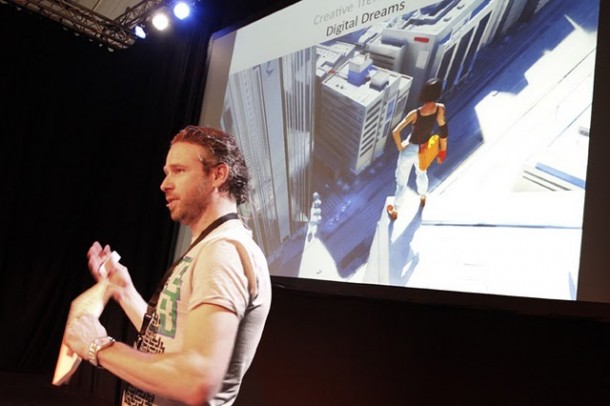 Join me on the following dates in the following locations for a sneak preview about me new book:
Join me on the following dates in the following locations for a sneak preview about me new book:
Adfolive (NL) : 15-9 2015 workshop Gamification (closed session)
University of Amsterdam (NL): 23-9 2015 workshop setting goals for serious games (closed session)
University of Amsterdam (NL): 7-10 2015 workshop project management & production of serious games (closed session)
Amsterdam Dance Event ADE (NL): 15-10 2015: moderating a panel session about music for games and other media (open session)
Bosnia Agile Day (Sarajevo): 17-10-2015 presentation how game mechanics can help companies to become more agile (open session)
Agile in Africa (Ghana – Accra): presentation how game mechanics can help companies to become more agile (open session)
Inzet op maat (NL): 3-11-2015 presentation and sharing successes of recent projects (open session)
WEKA HR Strategie (NL): 11-11 2015 presentation and sharing successes of recent projects (two open sessions)
HRM & het onderwijs (NL): 17-11 2015 presentation and sharing successes of recent projects (open session)
HR Goes digital (NL): 19-11 2015 presentation and sharing successes of recent projects (open session)
Q&A With Jane McGonigal
The Entertainment Software Association (ESA) interviewed researcher, game designer and author Jane McGonigal. Her newest book, “SuperBetter,” which releases September 15, explores a decade’s worth of scientific research into the ways games—including video games, sports and puzzles—change how people respond to stress, challenges and pain and how to cultivate new powers of recovery and resilience in everyday life simply by adopting what McGonigal calls a more gameful mindset. Read the interview below – with a big thanks to ESA for sharing!
- Please briefly introduce yourself and your work.
 I’m a researcher, author and game designer who has spent the past 15 years trying to prototype and provide scientific evidence for the ways in which games can help us become the best versions of ourselves: happier, braver, more resilient, better problem-solvers and better allies to our friends and family.
I’m a researcher, author and game designer who has spent the past 15 years trying to prototype and provide scientific evidence for the ways in which games can help us become the best versions of ourselves: happier, braver, more resilient, better problem-solvers and better allies to our friends and family.
Most recently, my work has focused on how games can improve mental and physical health. There’s a rapidly growing body of evidence in the scientific literature that ordinary video games can be a powerful tool for treating depression, anxiety and even chronic pain. I’ve spent the past five years researching this topic – I’ve read literally more than 1,000 studies in the fields of neuroscience, psychology and medicine.
Now, I’m publishing my “SuperBetter” book to help get this entire, emerging field of research into the hands of the game-playing public and also game developers. I want the public to understand how video games can be played with purpose – that is, with the knowledge that you’re not just having fun, but you’re also developing important psychological resources, like creativity, determination, optimism, curiosity and resilience in the face of setbacks. And I want game developers to understand how to make games that bring even more of these benefits to their players.
- How did you first become interested in working with video games?
That’s a very long story that starts with me researching and making games as a Ph.D. student at UC Berkeley, although I guess it starts even earlier, when I was 10 years old and designed my first video game with ASCII art on a Commodore 64 computer.
But the really pivotal experience for me, more recently, in guiding me to the work I’m doing today was the mild traumatic brain injury that I suffered in 2009. Thirty-four days after the injury, I decided to try to bring my game designer skills to the problem, and I invented a game to help my brain heal and to deal with the severe depression and anxiety.
That has been a real turning point in my game development career, as that game (SuperBetter) has now been used by half a million people to improve their mental and physical health and has created some amazing research opportunities for me with organizations like the National Institutes of Health. All of this has convinced me that game design is going to be one of the most important areas of research and discovery in medicine and clinical psychology over the next decade.
- What excites you most in your day-to-day job?
Data! Scientific data is what excites me. Every time a new study on the real-life impact of gameplay comes out, I devour it.
Even more exciting is doing original research and seeing the results. For example, with SuperBetter, we’ve done two major studies so far. First, a randomized, controlled study conducted by the University of Pennsylvania found that playing SuperBetter for 30 days significantly reduces symptoms of depression and anxiety, and increases optimism, social support and players’ self-confidence. The study also found that people who followed the SuperBetter rules for one month were significantly happier and more satisfied with their lives.
More recently, a clinical trial funded by the National Institutes of Health and conducted at Ohio State University Medical Research Center and Cincinnati Children’s Hospital found that the SuperBettergame improves mood, decreases anxiety and suffering, and strengthens family relationships during traumatic brain injury rehabilitation and recovery. Honestly, there is nothing more exciting than getting solid scientific evidence that a game you’ve made is changing people’s lives and helping them get happier and healthier from extremely difficult challenges.
Note from myself: It is interesting to see that Jane is addressing the four quadrants I always use to determine our key drives for game design: physical, mental, emotional and social elements. You can find them in the handouts (slide 34) for the Gamification Workshop presentation on this page. Of course these are based on the Insights model, which are based on Quinn… But I guess we – as human beings – are always looking for rational (mental), physical, emotional (social) and spiritual challenges: or active and passive events. Often spiritual is left out in favor of social. Maybe social can be the opposite of spiritual? Spiritual meaning: inside my mind, where as social means: outside my mind in interaction with others…?
- Where do you see video games in 10 years? What broader applications across society can we expect in games’ future?
A decade from now, ordinary video games will be understood as an important tool in creating mental health and well-being. I forecast with very high confidence that games will be used to treat depression, anxiety, pain and post-traumatic stress disorder (PTSD) as a complement to, or in many cases be prescribed in lieu of, pharmaceutical treatment.
Note from myself: Obviously Jane is talking about serious games here. Since 2010 we have published a lot of serious games in for companies like Foot Locker Europe and NN Global. Unfortunately we cannot disclose all of our projects online, but the ones we are allowed to talk (and write) about can be found on our project page.
- What is your favorite video game and why?
I’ll go with the scientific literature here again, and say that Tetris has been the most extensively studied game for accomplishing everything from preventing flashbacks after witnessing a trauma – so it could be used as a cognitive vaccine against PTSD; to reducing cravings for cigarettes and junk food by 25 percent – so it can be used as a tool in behavior change and fighting addiction; to creating the same blood flow patterns in the brain as meditation – so it can be used to improve attention and improve the body’s ability to recover from stress.
Everyone should have Tetris on their phone. We should have PSAs explaining how to use it for all of these benefits. And I’m ready to give Tetris creator Alexey Pajitnov the Nobel Prize in Games.
Future of VR and Oculus Rift?
Six years of BrandNewGame
While E3 is taking place in LA at this moment, our silly little company BrandNewGame celebrates its sixth anniversary tomorrow. We’ve evolved from a one-man band in 2009 to a one-man one girl duo in 2015, with almost 18 people surrounding us, divided in two companies, to produce the great projects we deliver for our clients. So a big thanks to Today who takes care of the design side of things and to Weirdbeard who develop our ideas technically (programming and game design stuff).
The past six years have been a rollercoaster for me from starting from scratch (literally) writing a book about how you can use games as a branding and marketing tool in 2010 (free download still at www.brandnewplayground.com) to talking during SXSW with Suvi Helminen, meeting Ahmet Akdag in Istanbul where we organize our Gamification Workshops and launching our GameStorm – change management game – at Foot Locker Europe with 800 store managers in four different cities (unfortunately I cannot disclose anything about that). I hope you find all our updates useful!
Anyway I would just like to say THANK YOU to all the people that made our success possible, both partners and clients. We would never have succeeded without you!
Let’s continu to Play for Progress!
Friday Fun: Tetra Pac-Man
Okay, so it’s Friday… and for me Friday is about FUN…
There’s a lecture about packaging design net week in Utrecht and one of my partners said that the guy that would present there is a real ‘Tetra pak man”… so I’d thought I’d search for a nice pic for that name: Tetra Pac-Man and this is what came up… thanks for creating it, creator…
Four out of five USA households own a game console
|
New Study Finds that Four out of Five American Households Own a Device Used to Play Video Games April 14, 2015 – Washington, D.C. – More than 150 million Americans play video games, according to new research released today by the Entertainment Software Association (ESA). The report, 2015 Essential Facts About the Computer and Video Game Industry, also shows that 42 percent of Americans play video games regularly, or at least three hours per week. Other key findings highlight the social nature of game play. According to the report, 56 percent of the most frequent gamers play with others and 54 percent play in multiplayer mode at least weekly. More than half of the most frequent game players say that video games help them connect with friends and about half of them say that video games enable them spend time with family.
The report also found that about 60 percent of parents whose children are gamers play computer and video games with them at least weekly. More than three-quarters of parents say they play with their children because it is fun for the entire family and an opportunity to socialize. Additionally, 88 percent of parents whose children play games believe the Entertainment Software Rating Board (ESRB) video game ratings are either very or somewhat helpful in choosing games for their children. “The ESRB is the gold standard for systems that for provide parents with guidance that allows them to make informed decisions,” Gallagher said. The 2015 Essential Facts provides statistics on gamer demographics, the types of games played and the kinds of game platforms used, the top-selling video games and other industry sales information. Notable findings include:
Essential Facts About the Computer and Video Game Industry is the most in-depth and targeted annual survey of its kind. It is conducted for ESA by Ipsos MediaCT, which surveyed more than 4,000 American households. |
Applied games for the eldery @ Master of Applied Games studies
In January 2015 I managed the ‘practical assignment’ for the master of applied games at the University of Amsterdam (department of Game Studies). The subject that was chosen by the university was to ‘develop an applied game for elderly to overcome the negative effects of social isolation’. Most students did really well. After the grading, there was one student that sent us the video below to give his opinion about the assignment…. It made us laugh…





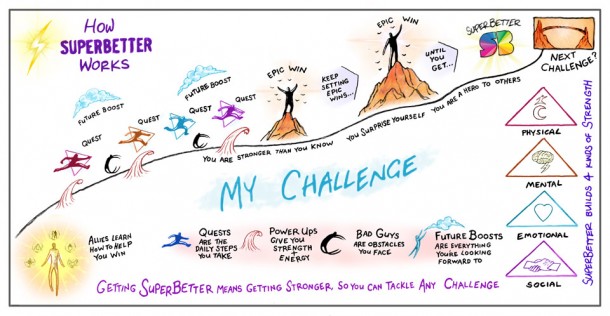

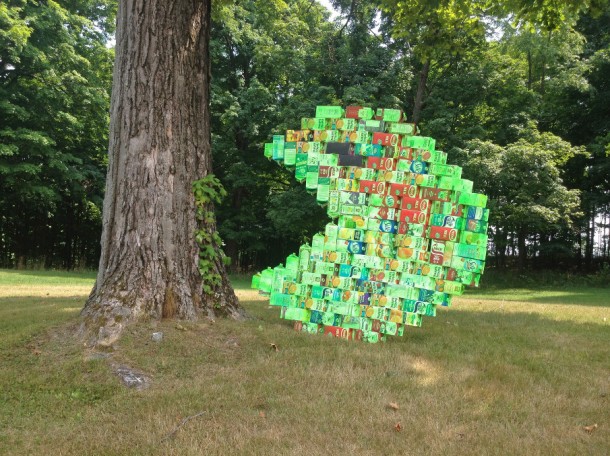
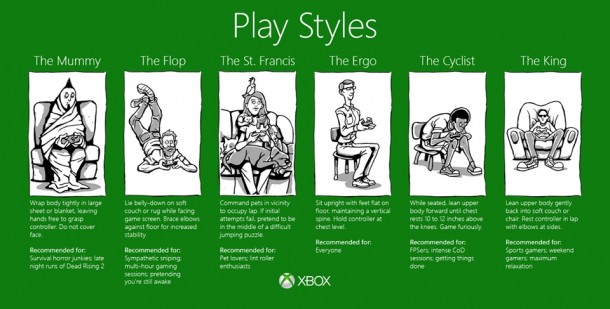 “Video games provide a social setting where family and friends come together to connect, learn and have fun,” said Michael D. Gallagher, president and CEO of ESA, the trade association that represents the U.S. video game industry. “The sheer number of people who regularly enjoy entertainment software and share those experiences with others underscores how video games have become ingrained in our culture.”
“Video games provide a social setting where family and friends come together to connect, learn and have fun,” said Michael D. Gallagher, president and CEO of ESA, the trade association that represents the U.S. video game industry. “The sheer number of people who regularly enjoy entertainment software and share those experiences with others underscores how video games have become ingrained in our culture.”